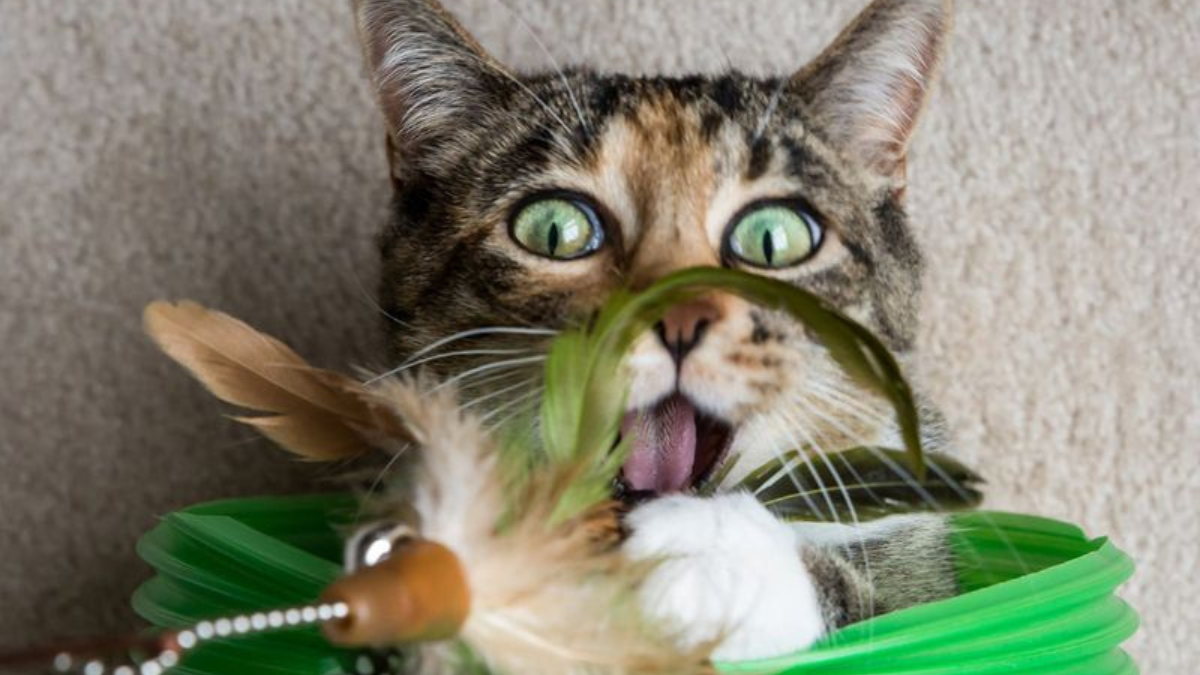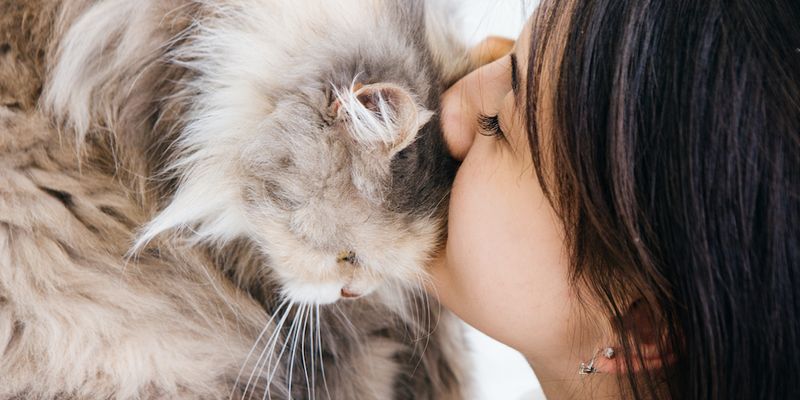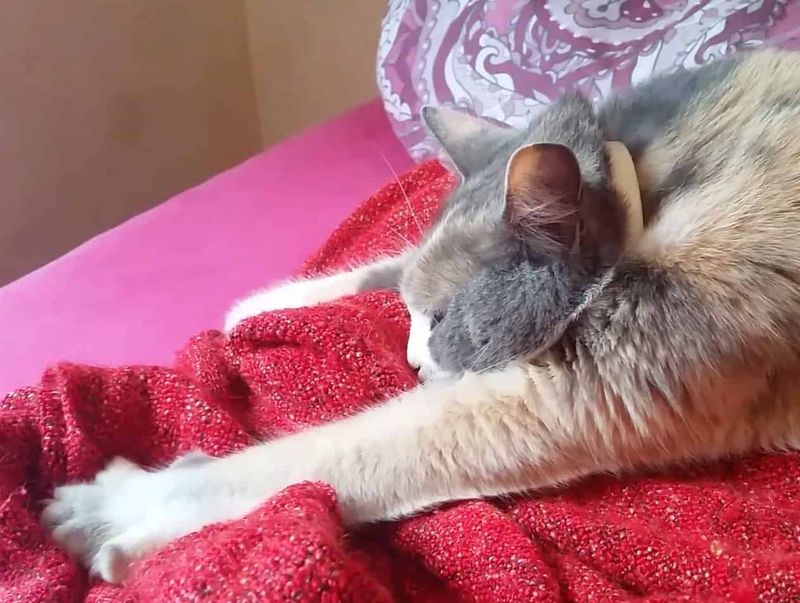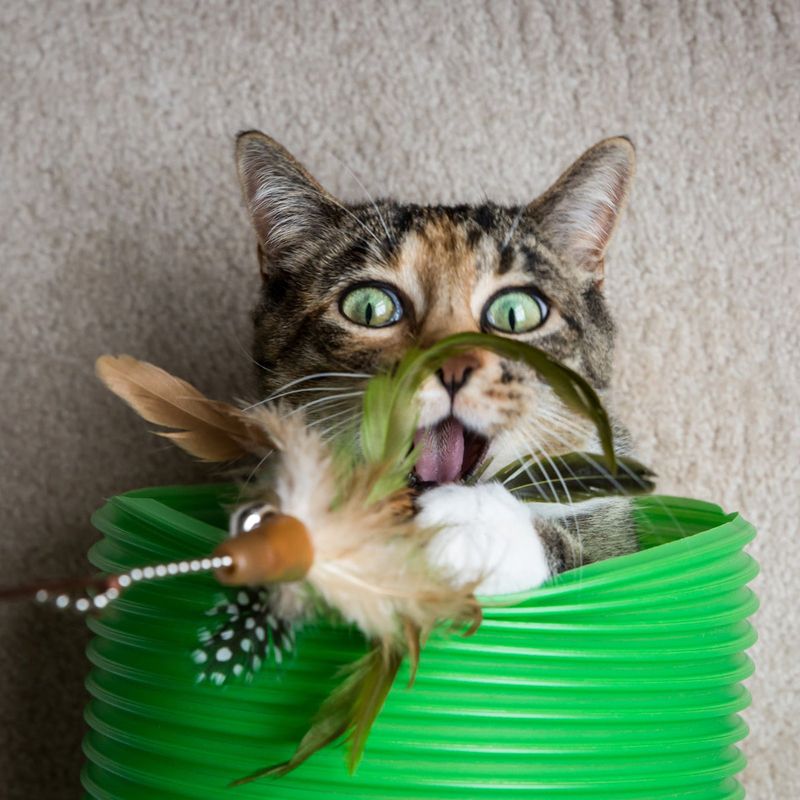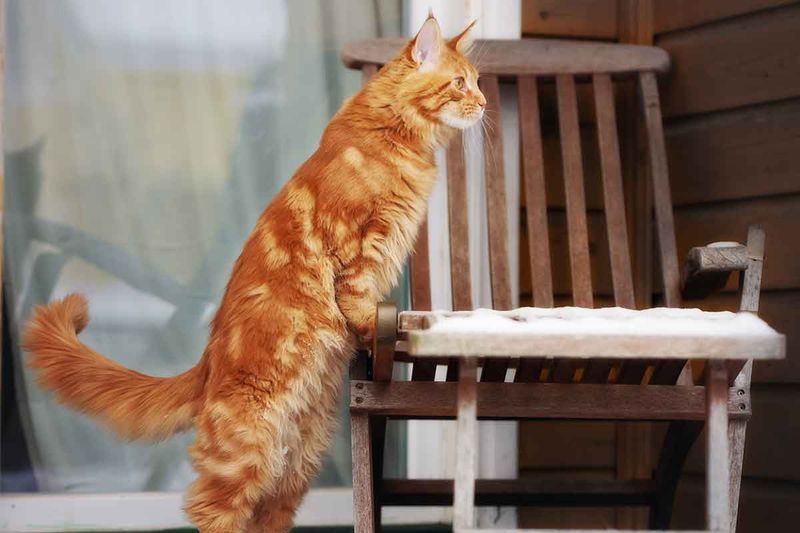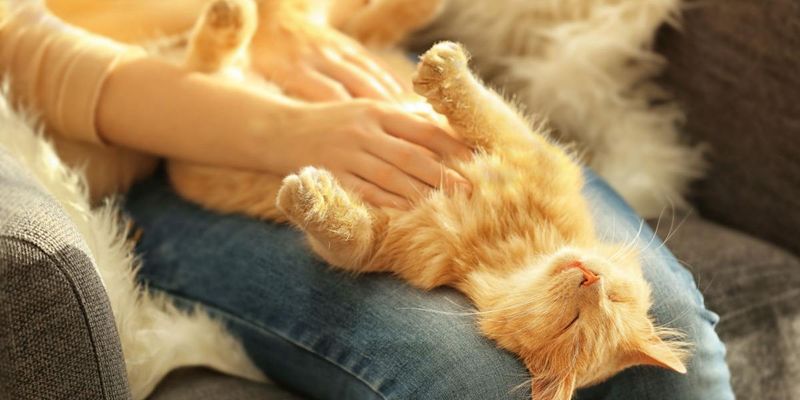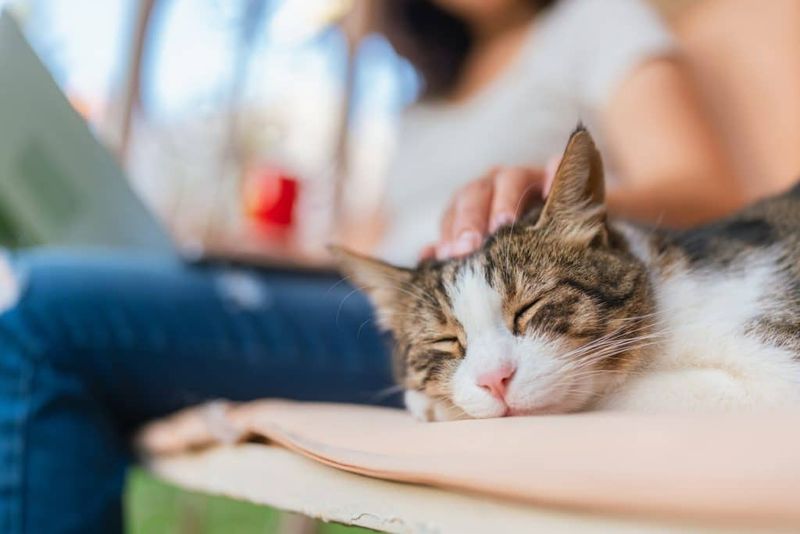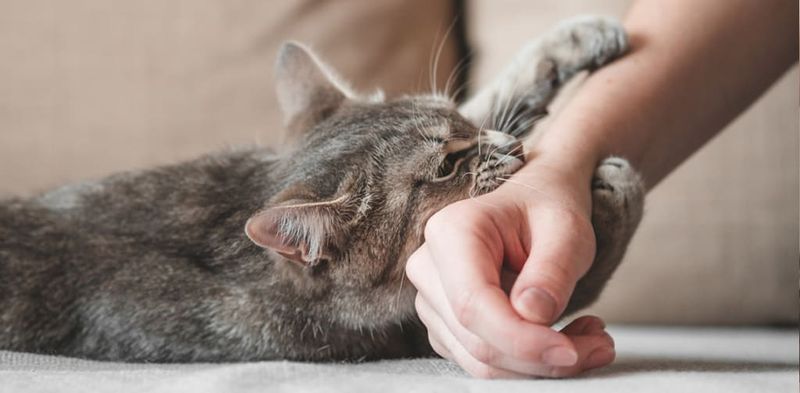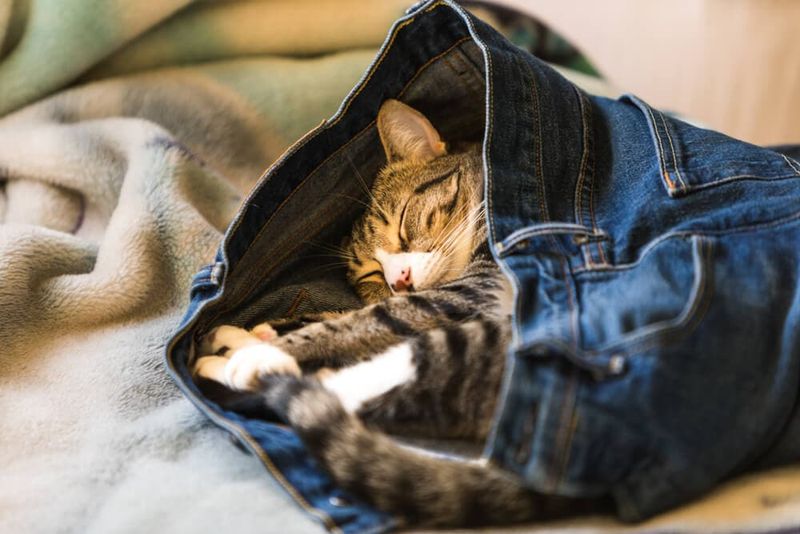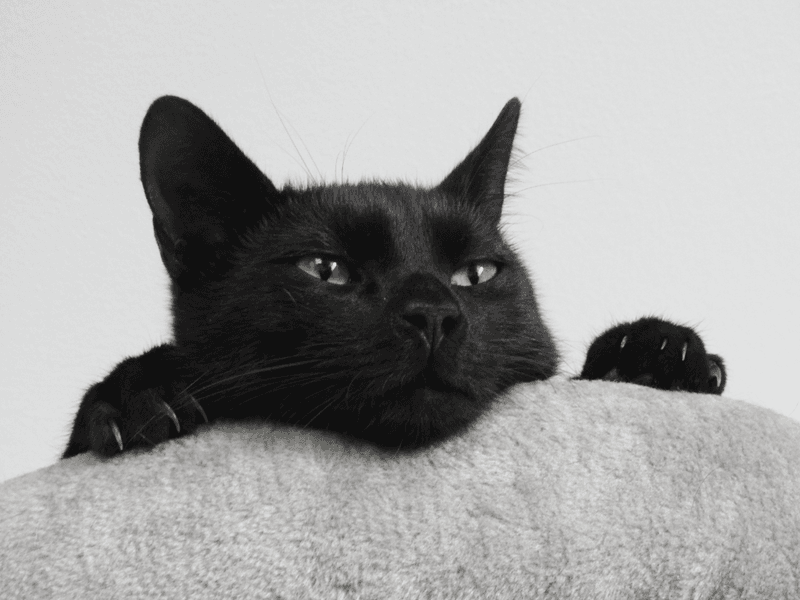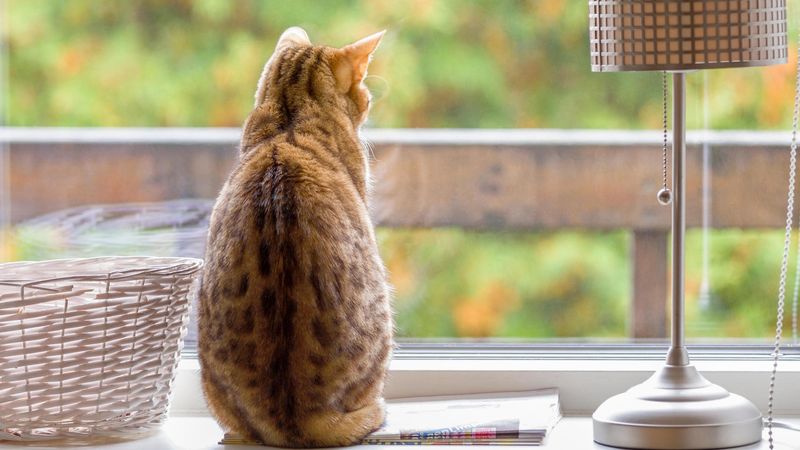📖 Table of Content:
- 1. Slow Blinks – The Kitty Kiss
- 2. Headbutts and Face Rubs
- 3. Purring While Cuddling
- 4. Kneading Your Lap
- 5. Bringing You ‘Gifts’
- 6. Tail Position and Movement
- 7. Following You Everywhere
- 8. Belly Exposure
- 9. Sleeping Near (Or On) You
- 10. Grooming You
- 11. Chirps and Trills
- 12. Claiming Your Belongings
- 13. The Welcome Home Greeting
- 14. Presenting Their Back
Cats often get labeled as aloof, yet their ways of showing love are distinct and heartfelt. Unlike dogs that seek frequent attention, cats prefer to express affection quietly and on their own schedule. These subtle gestures might go unnoticed, but they carry deep meaning for those who understand them.
Felines communicate their feelings through small actions like slow blinks, gentle purrs, and soft head nudges. Each behavior is a unique sign of trust and bonding that strengthens the connection with their humans. Recognizing these signals helps reveal the true depth of a cat’s affection.
Though cats may seem independent, their emotional bonds run deep beneath the surface. They build relationships carefully and express attachment through nuanced behaviors. Appreciating these quiet moments allows a better understanding of a cat’s loving nature.
1. Slow Blinks – The Kitty Kiss
Cats communicate love through their eyes. When your cat gives you slow, deliberate blinks, they’re essentially blowing kisses your way! This behavior, sometimes called a ‘kitty kiss,’ happens when cats feel completely safe in your presence. Felines only close their eyes around someone they trust completely. In the wild, closing eyes means vulnerability to attack, so this gesture shows your cat feels secure with you. Try returning the slow blink next time. Many cats will respond back, creating a sweet nonverbal conversation between you and your furry friend.
2. Headbutts and Face Rubs
Your cat isn’t just being weird when they smash their head against you – they’re actually claiming you! Cats have scent glands on their cheeks and forehead that release pheromones when rubbed against objects or people. These friendly headbutts (officially called ‘bunting’) mark you as part of their territory in the most loving way possible. The behavior signals that your cat considers you part of their safe circle. The harder and more frequent the headbutts, the more your cat is trying to mix their scent with yours. It’s their way of saying ‘you’re mine!’
3. Purring While Cuddling
That rumbling engine sound coming from your cat isn’t just random – it’s a direct expression of contentment. Cats typically purr when they’re happy, though they also purr when stressed or in pain as a self-soothing mechanism. When your cat climbs onto your lap and starts that familiar vibration, they’re expressing pure comfort in your presence. The combination of seeking your closeness and purring is a double confirmation of their affection. Scientists believe purring has healing properties for cats – and possibly for humans too! The frequency of purrs (between 25-150 Hz) can promote tissue healing and bone growth.
4. Kneading Your Lap
Rhythmic paw pushes might be uncomfortable (especially with claws!), but they’re deeply complimentary. Kneading behavior starts in kittenhood when nursing – pushing paws against mom stimulates milk flow. When adult cats knead you, they’re regressing to this comfortable kittenhood state. Cats only knead on surfaces – or people – they feel completely relaxed with. The behavior releases endorphins that make your cat feel good, creating a positive association with you. Some cats even drool while kneading! This further confirms they’re experiencing a state of blissful regression, showing they see you as their source of comfort and security.
5. Bringing You ‘Gifts’
Finding dead mice or mangled toys at your feet isn’t exactly heartwarming, but to your cat, it’s the ultimate compliment. Cats are natural hunters who teach their kittens to catch prey. When they bring you their ‘kills,’ they’re treating you like family. This behavior shows your cat sees you as someone who needs looking after. In the wild, mother cats bring injured prey to kittens to teach hunting skills. Your cat might view you as a rather hopeless hunter who needs help! Female cats typically bring more gifts than males, but any cat might show this strange form of affection. Thank them (then discreetly dispose of any unfortunate creatures).
6. Tail Position and Movement
A cat’s tail works like an emotional barometer, with different positions revealing their feelings. When your cat approaches with a tall, slightly curved tail quivering at the tip, they’re expressing excitement to see you specifically. This upright tail position is the feline equivalent of a big smile and wave. Cats reserve this greeting for their favorite people and fellow cats they consider friends. The slight curve at the top (forming a question mark shape) shows friendly interest. If they wrap their tail around your leg while walking past, that’s even better – it’s the cat equivalent of holding hands!
7. Following You Everywhere
The bathroom buddy phenomenon isn’t your cat being nosy – it’s a genuine display of attachment. Cats are naturally curious, but when they specifically follow one person from room to room, it signals special bonding. This shadow behavior shows your cat values your company above all else. In multi-person households, cats often select one human as their favorite, showing this preference through consistent following. The behavior stems from social bonding instincts. In feral colonies, cats stick close to those they trust most. Your bathroom-invading feline is simply maintaining proximity to their chosen person – you!
8. Belly Exposure
Rolling over to show a fluffy belly is the ultimate trust signal from your normally cautious cat. The stomach area contains vital organs and represents extreme vulnerability – cats only expose it when they feel completely safe. Contrary to dog behavior, this isn’t always an invitation for belly rubs! Many cats display their tummies as a compliment to you, not a request for touching. The display itself is the affection signal, showing complete trust. Some cats do enjoy gentle belly contact, while others will engage their claws if you try. Learn your individual cat’s preference, but either way, appreciate this vulnerable position as a major compliment!
9. Sleeping Near (Or On) You
Cats spend roughly 15 hours daily sleeping, and their choice of location speaks volumes. When your cat chooses your lap, chest, or even just your vicinity for naps, they’re showing deep trust and attachment. Sleep makes cats vulnerable to predators. By snoozing near you, they’re demonstrating complete faith in your protection. The warmer the body part they choose, the more comfort they’re seeking from you. Some cats prefer sleeping beside rather than on their humans. This still counts as affection – they want proximity while maintaining independence. Either way, being chosen as their sleep spot is a high honor in the feline world.
10. Grooming You
Those rough-tongued licks might feel like sandpaper, but they’re actually sweet gestures of inclusion. Cats groom each other as part of social bonding called allogrooming – it’s typically only done between cats who share strong bonds. When your cat licks your hand, hair, or face, they’re treating you as part of their family group. This behavior often happens after you’ve petted them, as they’re returning the grooming favor. The roughness comes from tiny backward-facing hooks on their tongues designed to remove dirt and loose fur. While it might not feel pleasant to us, remember this slightly painful attention is actually your cat’s way of caring for you!
11. Chirps and Trills
The adorable chirping sounds your cat makes when greeting you aren’t random noises. These musical vocalizations, different from regular meows, are special communications reserved for friendly interactions. Mother cats use these trills to get kittens to follow them. When your adult cat directs these sounds at you, they’re expressing happiness to see you and often requesting that you follow them somewhere. Each cat has their own unique voice and chirping style. Some sound like birds, others more like rolling Rs. The pitch usually rises at the end, creating a friendly, questioning tone that invites interaction without demanding it.
12. Claiming Your Belongings
Finding cat hair all over your favorite sweater isn’t just an annoying cleaning issue – it’s a sign of feline affection. Cats deliberately seek out items with your scent to sleep on or knead, creating a comforting blend of your smell with theirs. This behavior stems from territorial instincts, but with a loving twist. Rather than marking these items as exclusively theirs, they’re creating a shared scent profile that represents your bond. The items chosen often hold strong personal smells – recently worn clothes, your side of the bed, or your favorite chair. The stronger your scent, the more attractive the item is for this affectionate claiming behavior.
13. The Welcome Home Greeting
Cats aren’t known for running to the door like dogs, which makes their version of a welcome even more special. The cat who greets you after absence – whether with meows, raised tail, or simply appearing from nowhere – is showing genuine excitement at your return. This greeting ritual varies by cat personality. Some will vocalize loudly, others perform figure-eight weaves between your legs, while shy cats might just appear in the same room after you arrive. Research shows cats do form attachment bonds with their people, similar to children with parents. Their greeting behavior confirms they notice your absence and feel genuine happiness when you return to their territory.
14. Presenting Their Back
When your cat positions their back toward you, especially while sitting nearby, it’s not rudeness – it’s actually a subtle compliment. The back is a vulnerable area for cats, as they can’t monitor threats approaching from behind. By turning their back, your cat is demonstrating they trust you completely not to harm them. This position also often invites scratching at the base of the tail, a spot many cats love but can’t reach themselves. The height of this trust display is when a cat sits with their back to you while also dozing off. They’re essentially saying, ‘I feel so safe with you that I can let my guard down completely.’
